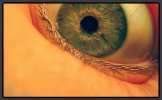Registering Drosophila Embryos at Cellular Resolution to Build a Quantitative 3D Atlas of Gene Expression Patterns and Morphology
Download: pdf
Text Reference
Charless Fowlkes, Cris Luengo Hendriks, Soile Keränen, Mark Biggin, David Knowles, Damir Sudar, and Jitendra Malik. Registering drosophila embryos at cellular resolution to build a quantitative 3d atlas of gene expression patterns and morphology. In CSB 2005 Workshop on BioImage Data Minning and Informatics. 2005.BibTeX Reference
@inproceedings{Fowlkes_CSB_2005,author = {Fowlkes, Charless and Hendriks, Cris Luengo and Ker{\"a}nen, Soile and Biggin, Mark and Knowles, David and Sudar, Damir and Malik, Jitendra},
title = "Registering Drosophila Embryos at Cellular Resolution to Build a Quantitative 3D Atlas of Gene Expression Patterns and Morphology",
booktitle = "CSB 2005 Workshop on BioImage Data Minning and Informatics",
year = "2005",
tag = "biological_images"
}
